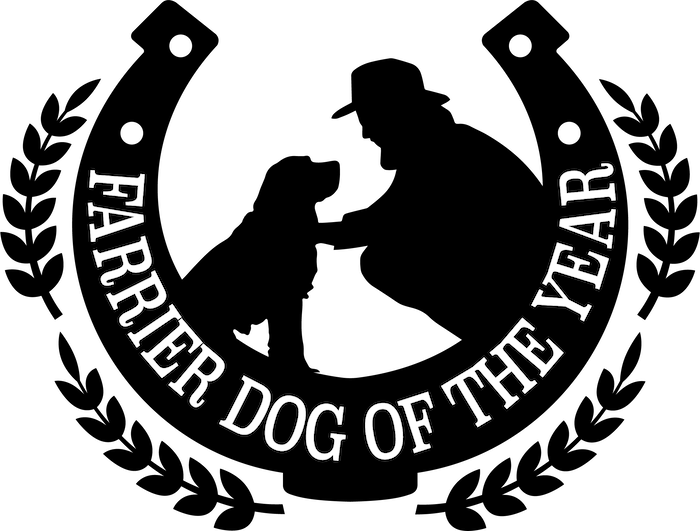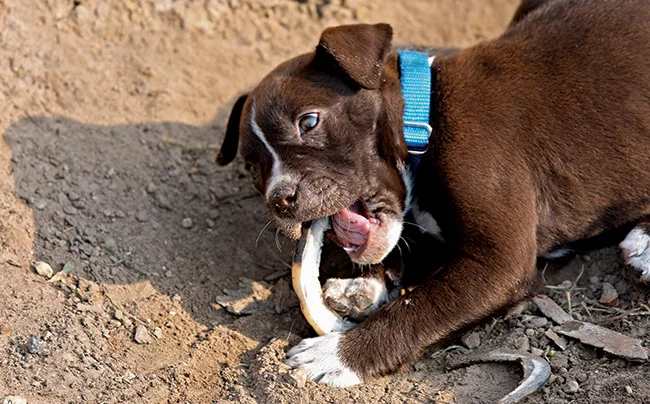For many years based on traveling with farriers, I’ve thought the Jack Russell was the favorite dog breed of horseshoers. But that opinion didn’t hold water when we recently conducted an American Farriers Journal electronic survey among footcare professionals in regard to their favorite breed of dog and whether they take their pets along to barns where they work.
In fact, the Jack Russell only placed fifth in our list of 14 dog breeds. As the accompanying chart indicates, the Australian Cattle Dog was the favorite dog followed by the Border Collie and Labrador Retriever breeds.
There wasn’t any consensus when farriers were asked about the pros and cons of taking dogs along to hoof-care appointments. Some see benefits in taking dogs along — others are against the practice.
Some shoers point out that there can be considerable liability concerns with taking your dog into client barns. In fact, some barn owners have pointed out that their insurance company does not allow dogs in their horse barns.
The survey found 91% of farrier families have one or more dogs. Among those families with a dog, 26% of farriers regularly take a dog along on trimming and shoeing calls. Another 36% occasionally take a dog along, while 39% never take their dog.
Among farriers that take a dog in the truck, 22% let the dog go into the barn when they are working while 24% always leave the dog in the truck. Slightly more than half of the farriers say it depends on the client and the horses being worked on that day.
The farriers were also asked if they let their dogs or the dogs of clients munch on hoof scraps when trimming. Some 54% of the surveyed farriers allow dogs to eat hoof scraps, 18% do not and 28% say it depends on the client and the barn.
Safety Concerns
Some 41% of the farriers have had safety problems with dogs while working on horses. They indicate a major concern is when several dogs fight over hoof scraps, which can easily spook a horse. When an upset horse steps on a dog, the dog will often bite the horse, especially in the heels.
Other farriers find having a dog around helps calm horses during trimming and shoeing. Several farriers have a rule that no dogs are allowed in the barn while they’re working.
You may not realize clients aren’t as enthusiastic as you might think about farriers bringing a dog along to a hoof-care appointment. As an example, one of the surveyed farriers learned a great deal about dogs when he posted a question on a horse-owner website concerning what they like and dislike about their farriers.
He says several owners said they don’t like farriers bringing dogs to the barns because it causes a distraction and antagonizes the horses. Even though his dog was well trained, this farrier heeded the warnings and now leaves his dog at home.
Professionalism Concerns
A number of survey respondents felt strongly that it is not professional to bring a dog along to an appointment. They say it reduces the perception that you are a professional.
Some farriers believe it’s disrespectful to take dogs to other folk’s places unless it’s prearranged since they are there to focus on the client’s horses rather than the behavior of their dog.
Several shoers have found it’s difficult to ask a client to put his or her problem dog away when their dog is on hand. Since an owner’s dogs usually don’t like strange dogs on the property, they bark, defend their territory and often upset the horses.
Dog Handling Changes
These farriers were also asked if their personal experiences had an impact on the way they deal with dogs while trimming and shoeing. Many farriers indicated they chase the dogs out of the barn anytime a horse appears to be getting nervous.
When the dogs of clients get under or around a horse being worked on, one farrier asks the owner to put the dogs away for their own safety. If the owner doesn’t care about the dog’s safety, the farrier explains that he’s not going to risk getting hurt and tells them to remove the dog or he will leave the barn.
Another farrier doesn’t allow more than one dog to be running loose while he’s trimming or shoeing. He finds multiple dogs often lead to a situation where the dog-pack mentality can come into play where people, horses and dogs can get hurt.
Benefits of Taking a Dog Along
When asked about taking a dog to work, a number of farriers see no benefit. Others like the companionship a dog offers between appointments, serving as a guard dog with the truck and the fact that the dog can entertain children or other dogs at the barn.
Several farriers like to have someone to ride with during the day so they aren’t alone. Compared to a helper, they say a dog doesn’t spill coffee in the truck, doesn’t drive too fast, is never late for work, doesn’t talk back and doesn’t have to be paid. And on really long days when they need to pull over at an Interstate rest stop to take a quick nap, it’s nice to know their dog offers added protection against robbery.
In summary, there seems to be as many opinions about taking dogs along on trimming and shoeing calls as there are farriers. But one farrier summed it up pretty well when he talked about why he likes to take a dog along on barn call:
“If my clients aren’t happy to see me, at least they are happy to see my dog."

Download Your 2025 Farrier Dog of the Year Calendar!
We are excited to present the 2025 Farrier Dog of the Year Calendar, showcasing the 12 finalists from our Dog of the Year Contest that earned the most votes and captured the hearts of the farrier community. Each month features a different winning dog, and is a wonderful keepsake for each day of the coming year.








